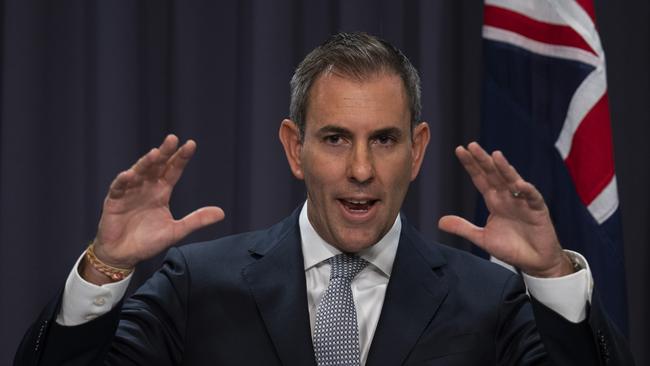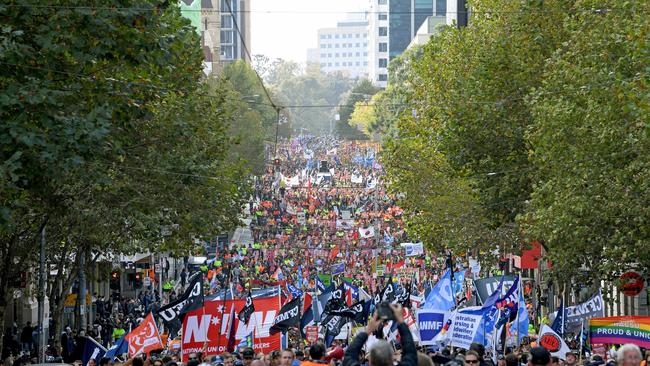Record low jobless rate hides economic hazards and the complications lying below the surface, writes Judith Sloan


Economics students learn early in the piece that unemployment comes in three parts: cyclical, structural and frictional. Cyclical unemployment refers to the variations that occur in line with the strength of the economy, whereas structural unemployment is about the institutional impediments that prevent jobs being created and people seeking and finding work.
Frictional unemployment is often largely forgotten. It refers to the unemployment that exists because people move jobs (or enter the workforce) and take a while to find the best match for their skills and preferences in line with the jobs on offer. For this reason alone, we should never expect the rate of unemployment to be zero. In fact, appropriate job search and matching perform important efficiency roles in the economy.

I am going to now pose a controversial question: Can the rate of unemployment be too low? At 3.5 per cent, the current rate is at a 50-year historic low, although it will be predicted to rise in Tuesday’s budget. It was 5.2 per cent immediately before the pandemic. The combination of extremely aggressive fiscal and monetary policy has been the main contributor to this outcome.
The rate of underemployment, which picks up people working fewer hours per week than they want, is also very low; just over 6 per cent compared with 14 per cent three years ago. The workforce participation rate is at a historic high of 66.8 per cent, one percentage point higher than March 2020.
What’s not to love? For fear of being written off as a heartless (and possibly) stupid economist, let me point to some of the dysfunctional features of the current labour market due to the extremely low rate of unemployment. The most obvious one is the pervasive shortage of workers: it is close to being across the board, although more acute in some industries and some regions. There is no doubt this is holding back sales as well as business investment.
Another potential problem of having such a low unemployment rate is that businesses will grab almost anyone willing to start, whether or not they are a good match for the job. And given the likelihood a new worker may move on in the event of something better turning up, there is not much incentive for employers to invest in training new recruits.

If we look at the recent job mobility figures here, they show the rate of job mobility (people changing jobs as a percentage of those in employment) has risen noticeably since the effects of Covid began to wane. In February 2022, 1.3 million people or 9.5 per cent of all employed people changed jobs. For professionals, the figure was 22 per cent. According to the Australian Bureau of Statistics, “this is the highest annual job mobility rate since 2012”.
In fact, prior to the pandemic, economists had been taking a closer look at the falling rate of job mobility as an explanation for the sluggish growth in wages. The argument was that workers were staying longer in the same jobs and employers didn’t feel the need to grant large pay rises. In theory, at least, a very low rate of unemployment leading, in turn, to higher rates of job mobility should provide a boost to wage growth.
In the past, most economists would have claimed a very low rate of unemployment of around 3.5 per cent is well below the non-accelerating inflation rate of unemployment – the NAIRU. For this reason alone, unemployment that low couldn’t be contemplated because the undesirable outcome of potentially runaway inflation would result. Bear in mind here that estimates of the NAIRU tended to be based on modelling rather than real-world observations.
While it is the case that inflation has recently become a problem here, it’s not clear that either the rate of unemployment or any wages breakout have been major contributors, although the recent increase in real unit labour costs does potentially point to a problem. But, by and large, wage growth in this country has remained relatively low, certainly compared with a number of other economies, including the US.

Australia is different from other economies in another way: we have had very large numbers of migrants enter ever since the borders were open. It is estimated net overseas migration will be 400,000 this financial year and above 300,000 next year. This compares with just over 200,000 before the pandemic.
One interpretation is that, just when wage pressures might have been expected to take off given the widespread worker shortage and the large numbers of vacancies relative to applicants, employers were able to access a new large pool of workers. This has enabled them to increase pay offers only slightly overall, although there are clearly exceptions.
It’s also worth taking a look at what has happened to the numbers on the JobSeeker Allowance. It’s important to point out the way the ABS measures unemployment (actively looking for work is a feature) is not the equivalent of the requirements to qualify for JSA. Indeed, many JSA recipients undertake some work, although it’s only around 10 per cent and not counted as unemployed by the ABS.
According to the most recent figures, there are close to 850,000 people on the JSA compared with just over 500,000 unemployed people, according to the ABS. Most troubling in the figures is the fact that between March 2020 and March 2023, the number on JSA actually increased by over 50,000 while the numbers unemployed, as measured by the ABS, fell by over 200,000. In other words, the gap between the two series has significantly widened.
The main explanation for this relates to the large number of non-jobseekers who receive the JSA. In fact, close to half of all JSA recipients are not actively seeking work. Legitimate reasons include family circumstances, ill-health and work/study commitments. But with the adequacy of the JSA in the news, one solution is to encourage more JSA recipients to look for work. Not only can there be immediate financial rewards (minimum wages are relatively high), but the best way to get a better job is generally to have any job.
Low unemployment is something to celebrate but there are several complications lying just below the surface. The fact that labour productivity has not moved in three years remains a major concern. The key now is to improve the functioning of the labour market, assist the unemployed to obtain a job and ensure low unemployment is sustainable in the context of low inflation.






